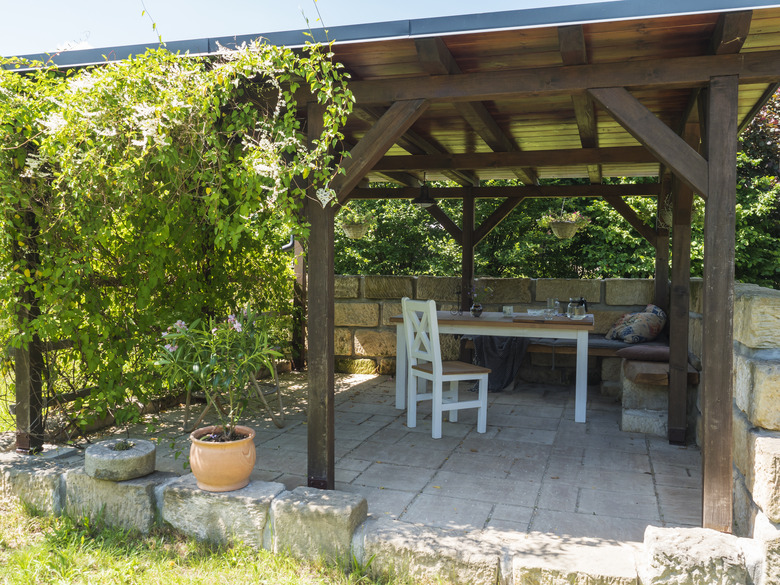Tips For How To Cut Sandstone
We may receive a commission on purchases made from links.
Sandstone is an example of a sedimentary rock. It formed over eons as small particles bound together with mud under pressure, and unlike igneous rocks, like granite, it can be somewhat fragile. It has attractive coloration ranging from brown to tannish pink, and it has many utilitarian and decorative uses around the house. People use sandstone to make outdoor fireplaces, patios, and walkways among other things.
Sandstone is mined from quarries and delivered in slabs and bricks of varying thicknesses. If you want to use it for a home project, you'll have to cut it at some point, and there are two ways to do this. One is with a hammer and bolster chisel, and the other way is to use a saw. A slab saw is recommended, although a table saw or worm-drive circular saw will also work. In all instances, you need a diamond cutting blade.
Cutting Sandstone With a Chisel
Cutting Sandstone With a Chisel
If you cut sandstone manually, you'll need a bolster chisel, which is a stone-cutting chisel with a 4-inch blade. The wide blade distributes the force of the hammer over a large area, which helps to minimize chips and cracks, which happen easily with sandstone. Be sure to wear goggles to protect your eyes from flying shards of stone. It's also important to set the stone you're cutting on a soft surface, such as soil (as opposed to rocks), to help soften the blows of the hammer.
Mark the cut line on all four sides of the piece you're cutting. You can do this with a pencil or scrape the line with a corner of the chisel. Tap the chisel gently along the lines on the top, bottom, and sides of the piece and then tap again from the top repeatedly until the stone separates. You may have to increase the force gradually but don't try to drive the chisel through the stone. Let the chisel gradually weaken the bonds that hold the stone together until it separates.
Cutting Sandstone With a Stationary Saw
Cutting Sandstone With a Stationary Saw
A more precise way to cut sandstone pavers and other large, regularly shaped pieces is to use a power saw. A table saw will work provided you use a diamond-tip cutting blade that is wide enough to cut all the way through the material. The blade will have a tendency to heat up, though, so if you have access to one that's large enough, use a wet saw designed to cut masonry.
Install the blade on the saw, mark the cut line on the stone, and push the stone slowly through the blade. Don't force it; stop applying pressure as soon as you hear the motor struggling. Let the saw return to full power and continue the cut but this time, apply less pressure. You'll need to wear a dust mask as well as goggles because the cutting process is very dusty.
Cutting Sandstone With a Circular Saw
Cutting Sandstone With a Circular Saw
It's risky to cut irregular pieces of sandstone with a circular saw because of the possibility of kickback, so you should only use a circular saw on flat slabs. Set the sandstone on a piece of plywood and adjust the depth of the blade to just barely penetrate the stone. Sink 1/8 to 1/4 inch into the plywood. Use a worm-drive saw, which is more powerful than a conventional sidewinder saw, but even then, the saw will have to work hard to cut sandstone, especially if it's thick, so cut slowly.
Put a 7-inch diamond-tip stone-cutting blade on the saw and put on goggles and a dust mask. Mark the cut line on the slab and cut along that line. If you're making a long cut, stop frequently to let the saw rest and the blade cool down. If the motor labors or the saw binds, you're going too fast. Slow down and cut at a steady pace and you'll make a clean cut.
